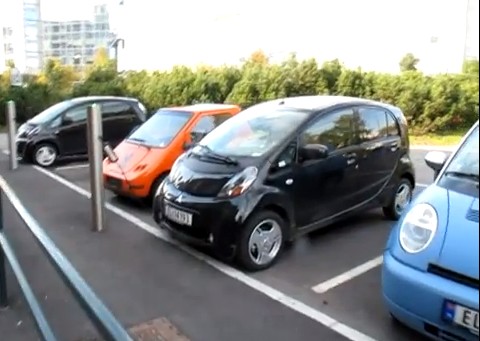If you've bought an electric vehicle recently, chances are you may have enjoyed some of the myriad incentives currently offered on plug-in cars.
Income-tax credits, purchase rebates, sales-tax exemptions, and various non-monetary incentives have been used worldwide to spur plug-in car sales growth.
Now, data from the International Council on Clean Transportation show they're working pretty well. Mostly.
An ICCT paper shows that incentives vary wildly from country to country, and that some are working better than others.
At around 200,000 vehicles, global plug-in car sales in 2013 were near double those of 2012--which were themselves twice as high as 2011.
That's still tiny in comparison to total global vehicle sales of perhaps 80 million, but sales figures show that electric vehicles are more popular in some regions than they are in others.
Topping the list is the Scandinavian country of Norway, whose hefty tax breaks mean electric vehicles are often cheaper than their conventionally-fueled counterparts--as well as cheaper to run, and easier to use day to day thanks to parking and roadway perks.
MORE: Tesla Model S Sets Record For Single-Month Sales In Norway
Plug-in cars accounted for 6 percent of Norway's sales in 2013, a figure that could climb this year based on sales in recent months.
The Netherlands is close behind, plug-in cars taking a 5.6 percent sales share in 2013--and that's closely followed by California, where plug-ins made up 4 percent of total vehicle sales last year.
No single incentive can take credit for strong sales in all these regions, but a combination of factors certainly seems to work.
ICCT notes that total incentives on EVs in the Netherlands can account for three quarters of a vehicle's base price--in a country where registration and annual vehicle taxes are high.
California wins out too. While the state's own financial incentives are no higher than many other places, most buyers can combine the Federal government's $7,500 tax rebate and a state purchase rebate of $1,500 for plug-in hybrids or $2,500 for battery electric cars.

Electric Cars Charging in Norway
Plug-in cars are also granted HOV lane access, charging infrastructure is expanding rapidly, and consumers are simply more aware of the vehicles on offer.
In contrast, countries like the United Kingdom fare poorly.
There, plug-in cars account for only 0.2 percent of total vehicle sales. That's despite a strong £5,000 subsidy (almost $8,500, at current exchange rates) per vehicle, exemption from the country's CO2-based vehicle taxation system, and exemption from London's CO2-based congestion charge scheme.
MORE: Many Consumers Still Unaware Of Electric Car Incentives
Sales in Germany are also poor, but there incentives are lower than many other European countries.
Tax exemptions and incentives there are minimal, and the country's sales tax means these benefits are typically eclipsed anyway, given the higher purchase price of electric cars.
Generally then, incentives make a difference. Countries offering the greatest incentives, financial and otherwise, show far greater plug-in car sales than those that don't.
Within the realm of incentives, there's no silver bullet, either.
In the Netherlands, financial incentives are clearly responsible for higher electric-car sales--but in California, and the rest of the U.S, infrastructure and plug-in perks are just as important.
_________________________________________













